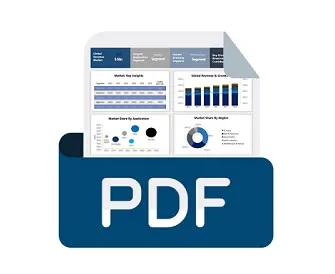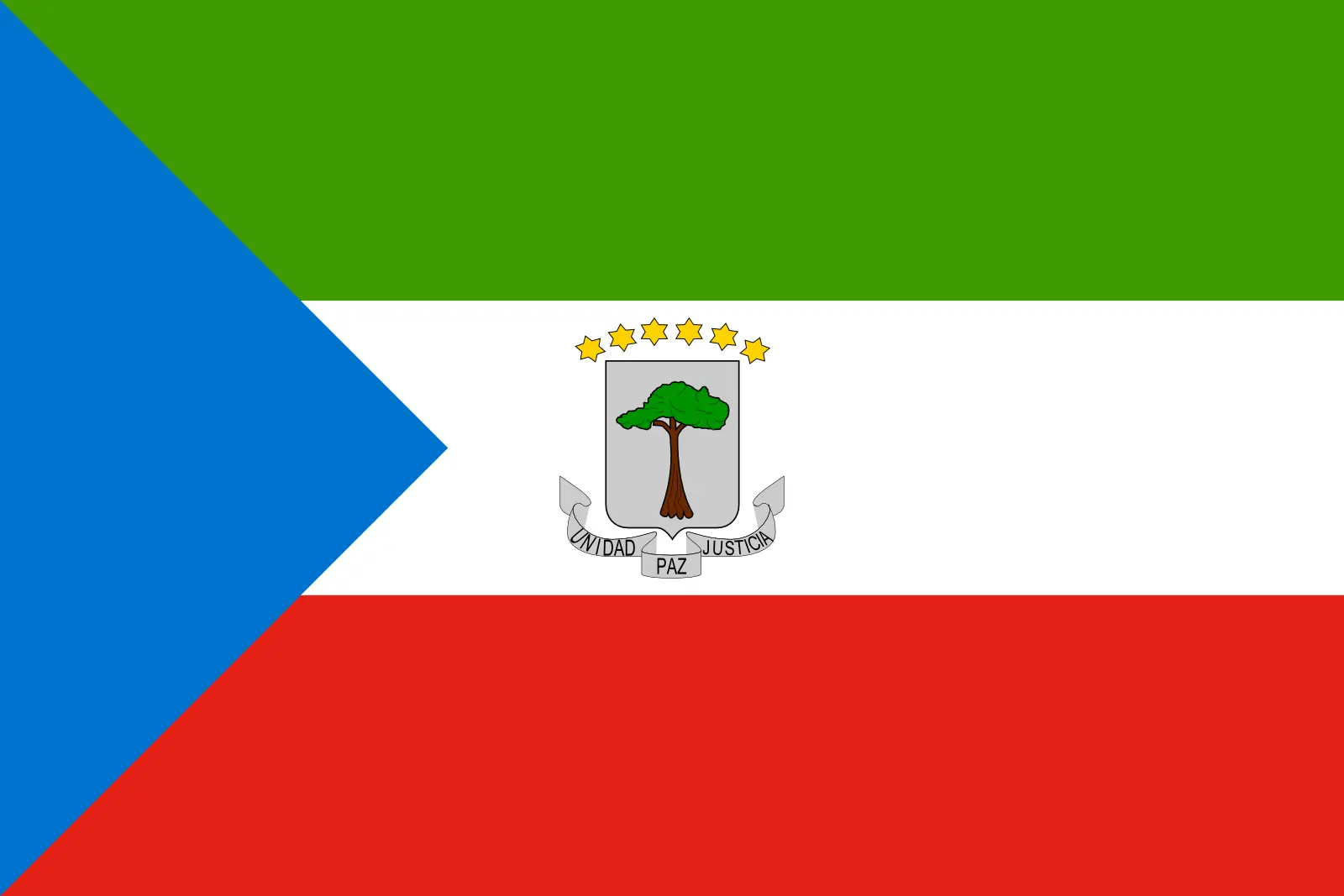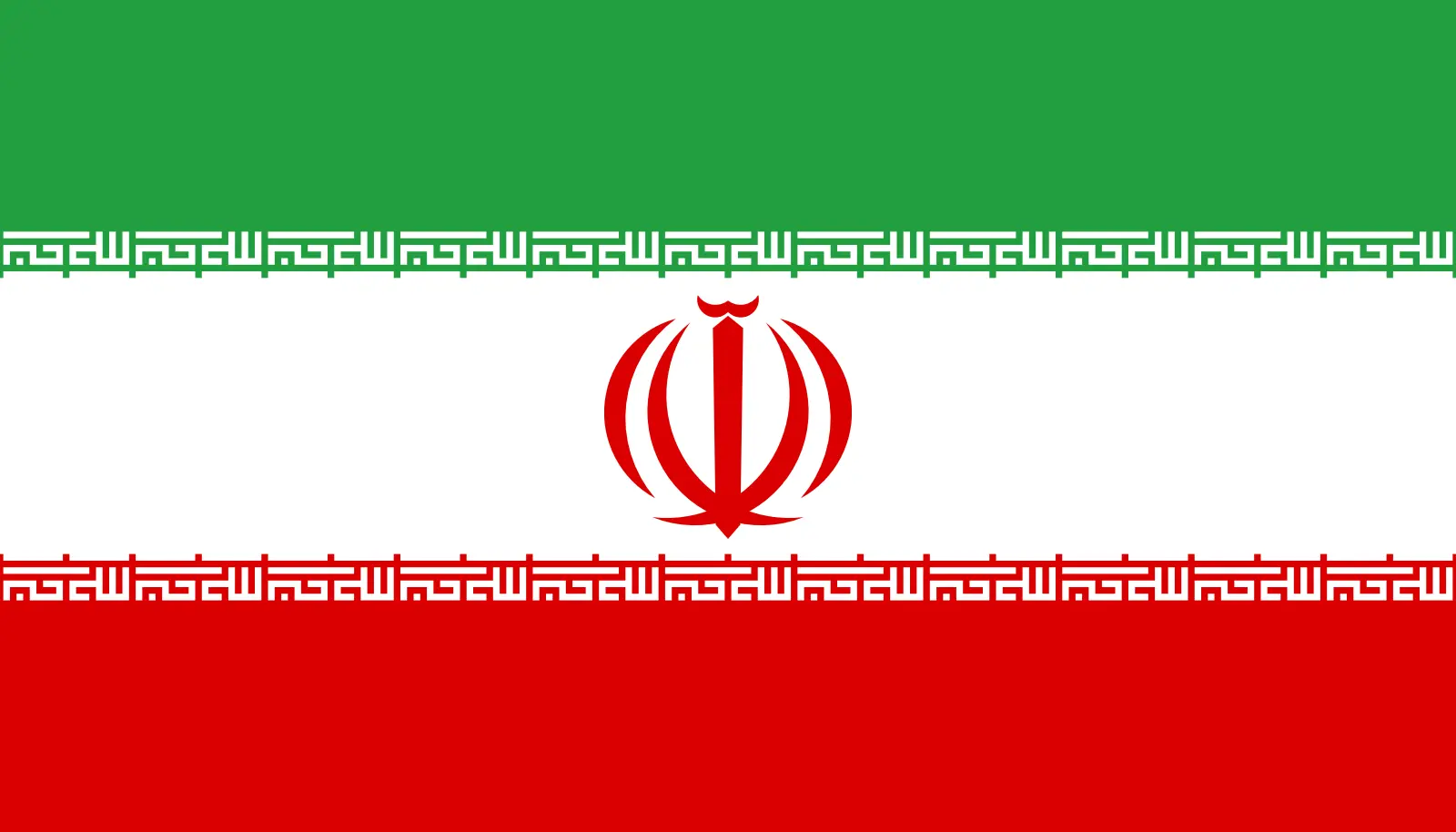Global Market Size, Forecast, and Trend Highlights Over 2025-2037
FSRU (Floating Storage and Regasification Unit) Market size was valued at USD 2.2 billion in 2024 and is expected to reach USD 4.81 billion by 2037, expanding at around 6.2% CAGR during the forecast period i.e., between 2025-2037. In the year 2025, the industry size of FSRU is assessed at USD 2.31 billion.
The boom in the international trade of liquefied natural gas (LNG) is set to significantly augment the demand for floating storage regasification units (FSRUs) in the coming years. The infrastructure difficulty in the transportation of LNG gas through pipeline systems is majorly driving the popularity of floating storage regasification units. The cost-effectiveness compared to the on-land pipeline system is driving countries' attention toward investments in floating storage regasification units.
|
The Global LNG Industry in 2023 |
|||||
|
Imported |
Importing Markets |
Exporting Countries |
Total Regasification Capacity |
Total Liquefication Capacity |
Spot & Short-term Trade |
|
401 MT |
48 |
20 |
1143 MTPA |
481 MTPA |
39% |
Source: GIIGNL
According to the FSRU Summit 2024, the global LNG import totaled 389.2 MT in 2022 with a hike of 16.9 MT compared to 2021. The major factor booming the LNG trade and subsequently, the adoption of floating storage regasification units is Europe’s move to replace pipeline supplies from Russia. The growth in LNG trade in Asian countries is due to the rising shift toward cleaner or low-carbon energy. Furthermore, the International Group of Liquified Natural Gas Importers (GIIGNL) revealed that in 2022, the regasification capacity amounted to 1068 MT worldwide, and out of this 143.1 MT is floating-based, around 13% of total regasification capacity. The growth rate of regasification capacity was nearly 8% with the majority of them built in Asia.
The FSRU Summit 2024 report also states that by the end of 2022, the total number of LNG tanker fleets totaled 734 vessels. Out of which around 49 FSRUs and 70 vessels were of ≤ 30,000 cubic meters. These 70 vessels were bifurcated as 43 LNGBVs and 27 small-scale LNG carriers. Also, the same source stated that floating storage regasification unit cargo capacity reached nearly 7.3 million cubic meters by 2022-end.
Source: Shell Plc
Shell Plc a leading oil and gas company reveals that the global LNG trade surpassed 397 million tons in 2022, a rise of 16 million tons than previous years. Gas and energy prices exhibited a boom in 2022 due to decreased Russian gas exports. Europe also witnessed a 60% hike in LNG imports owing to the stop of Russian pipeline supplies. To secure economies from high energy costs, the EU adopted various policies and regulations including LNG imports.

FSRU (Floating Storage and Regasification Unit) Market: Growth Drivers and Challenges
Growth Drivers
-
Energy transition trend: The net-zero emission policies and shift towards low-carbon fuels are fueling high demand for LNG. The growing adoption of energy transition policies augmenting the consumption of LNG rather than coal or oil is directly propelling the demand for FSRUs. For instance, the United Nations (UN) report disclosed that 196 Parties across the globe signed the Paris Agreement intending to reduce emissions to 45% by 2030 and reach net zero by 2050. The UN also estimates that the energy sector is the source of nearly 3-quarters of greenhouse gas (GHG) emissions. By Q2 2024, 107 countries accounted for around 82% of GHG emissions. Thus, LNG as a better alternative is estimated to augment the demand for floating storage regasification unit infrastructures in the coming years.
-
High-potential economies driving FSRU sales: The high-potential regions such as Asia Pacific, the MEA, and Latin America are offering lucrative opportunities for floating storage regasification unit manufacturers. The increasing energy demand and growing need for advanced infrastructure are creating lucrative opportunities in these regions. For instance, the report by the International Energy Agency (IEA) reveals that Asia Pacific is home to over half of the population worldwide with robust energy demand. China and India are the largest consumers of energy, while Japan and South Korea the huge industrial economies heavily rely on fuel imports.
|
Asia Pacific Energy Mix, 2000-2022 |
|||||
|
Electricity Consumption Per Capita |
Energy Intensity of the Economy |
Renewables |
Oil |
Natural Gas |
Coal Production |
|
↑179% Change 2000-22 |
↓179% Change 2000-22 |
23.3% Share of power generation, 2022 |
23% of total energy supply, 2022 |
11% of total energy supply, 2022 |
↑202% Change 2000-22 |
Source: IEA
Challenges
-
Safety Concerns: LNG storage and regasification in offshore or floating environments is risky owing to the substance’s flammable and hazardous features. The FSRUs are equipped with advanced equipment and safety systems, but any spill or explosion can severely hamper the water environment and the company’s reputation. Thus, a lack of safety management hinders the FSRU (Floating Storage and Regasification Unit) market growth.
-
High installation costs: The installation of floating storage regasification units requires huge Capex, which acts as a hindrance to new companies. Small companies hesitate to invest in advanced equipment and systems owing to limited budgets, which directly limits their growth and deters them from advanced technologies. Thus, the FSRU market is dominated by huge companies with low entries of new companies.
FSRU (Floating Storage and Regasification Unit) Market: Key Insights
| Report Attribute | Details |
|---|---|
|
Base Year |
2024 |
|
Forecast Year |
2025-2037 |
|
CAGR |
6.2% |
|
Base Year Market Size (2024) |
USD 2.2 billion |
|
Forecast Year Market Size (2037) |
USD 4.81 billion |
|
Regional Scope |
|
Floating Storage Regasification Unit Segmentation
Design (Single Hull, Double Hull)
In FSRU (Floating Storage and Regasification Unit) market, double hull segment is set to dominate revenue share of over 65.5% by 2037. The prime factors driving the demand for double hull floating storage regasification units are their high structural strength and enhanced protection for the cargo tanks. The integration of advanced technologies is enhancing the efficiency of LNG storage and regasification processes, subsequently driving FSRU sales growth. The high operational efficiency offered by double hull floating storage regasification units is also appealing to end users to invest in them. Thus, advancements in double hull FSRU designs, integration of advanced technologies, and growing LNG trade are set to propel segmental growth in the coming years.
Application (Power Generation, Industrial Use, Heating and Cooling)
By 2037, industrial use segment is anticipated to capture FSRU (Floating Storage and Regasification Unit) market share of over 45.5%. The rapid industrialization across the world is directly fueling high energy demand. For instance, according to the Research Nester’s study, global industrial production excluding the U.S. expanded by 1.5% in the third quarter of 2024. To meet the vast energy needs, industries are highly dependent on various fuel sources. The sustainability trend and strict emission regulations necessitate industries to adopt low-emission fuels such as LNG. Thus, end use industries' direct investments in floating storage regasification units for quick and cost-effective supply of LNG are set to boost the overall FSRU market growth during the foreseeable period.
Our in-depth analysis of the global FSRU (Floating Storage and Regasification Unit) market includes the following segments:
|
Capacity |
|
|
Fuel Type |
|
|
Application |
|
|
Design |
|
|
Propulsion System |
|

Vishnu Nair
Head - Global Business DevelopmentCustomize this report to your requirements — connect with our consultant for personalized insights and options.
Floating Storage Regasification Unit Industry - Regional Scope
North America Market Forecast
North America FSRU (Floating Storage and Regasification Unit) market is expected to capture revenue share of over 36.1% by 2037. The high industrial activities, increasing investments in advanced storage and gasification technologies, cleaner fuel transition, and growing LNG demand are contributing to the high sales of floating storage regasification units. The presence of high-tech companies is anticipated to aid key players in developing innovative floating storage regasification units and boost their position in the global landscape.
In the U.S., the increasing consumption of liquefied natural gas is increasing the investments in floating storage regasification units. After Europe mitigated the dependence on Russian LNG supplies, the U.S. LNG exports to the region increased. For instance, in March 2022, the Congressional Research Service (CRS) revealed that Europe captured 74.0% of the total U.S. LNG exports. Furthermore, in April 2024, the U.S. Energy Information Administration (EIA) stated that the country is the world’s largest exporter of liquefied natural gas, and in 2023, the LNG exports averaged 11.9 billion cubic feet per day (Bcf/d).
In Canada, the increasing investments in LNG floating projects are generating profitable opportunities for floating storage regasification unit producers. The supportive government policies to meet energy demand are also contributing to the floating storage regasification unit sales. For instance, in June 2024, the Pembina Pipeline Corporation and Haisla Nation collaborated with Cedar LNG Partners LP to invest in the Cedar floating LNG Project with 3.3 million tons per annum LNG capacity. Such investment environments are set to augment the Canada FSRU market growth in the coming years.
Asia Pacific Market Statistics
The Asia Pacific FSRU (Floating Storage and Regasification Unit) market is poised to rise at the fastest CAGR through 2037. The rapid industrialization, high energy demand, increasing production and consumption of LNG, and growing investments in port infrastructure and cleaner energy sources are estimated to uplift the revenues of floating storage regasification unit manufacturers in the coming years. India, China, South Korea, and Japan are witnessing LNG export and import activities contributing to the high demand for floating storage regasification units.
China being the major energy producer and consumer is positively fueling the demand for LNG. The swift hike in industrial and urban activities is further necessitating the country to invest in floating storage regasification units. The U.S. EIA report states that China’s domestic natural gas production offered 58.0% of its supply in 2023. In the same year around 2.6 billion cubic feet per day of natural gas was consumed by the country.
India’s economic growth is directly related to its energy consumption, the high use of electricity reflects the ongoing industrial, manufacturing, and urban activities within the country. The India Brand Equity Foundation (IBEF) report reveals that the country’s goal to achieve net zero carbon emissions by 2070 is driving investments in LNG. The clean fuel trend is augmenting the LNG trade activities, further generating high-earning opportunities for floating storage regasification unit manufacturers. During the period 2023-2024, around 23.3 million tons of LNG was imported by the country. Furthermore, the Federation of Indian Petroleum Industry (FIPI) report elaborates that the increasing investments in the LNG infrastructure are driving the adoption of advanced floating storage and regasification units.

Companies Dominating the FSRU (Floating Storage and Regasification Unit) Market
- Excelerate Energy, Inc.
- Company Overview
- Business Strategy
- Key Product Offerings
- Financial Performance
- Key Performance Indicators
- Risk Analysis
- Recent Development
- Regional Presence
- SWOT Analysis
- New Fortress Energy Inc.
- HÖEGH LNG AS
- Samsung Heavy Industries
- Cedar LNG Partners LP
- Snam S.p.A.
- OLT Offshore LNG Toscana
- Qatar Gas Transport Company Ltd.
- Maran Gas Maritime Inc.
- LNG Hrvatska d.o.o.
- EXMAR NV
- TotalEnergies
- Bumi Armada
- Gazprom
- Knutsen Group
- Petronas
- BW LNG
- ENI S.p.A
- Abu Dhabi Gas Liquefaction Co. Limited
- Golar LNG
- TechnipFMC
- Shell, Plc
- Novatek
- Dynagas, Ltd.
- Hoegh LNG
The FSRU (Floating Storage and Regasification Unit) market is characterized by the dominance of large-scale companies. The industry giants are continuously investing in technological advancements, the introduction of advanced models, strategic collaborations with high-tech companies, partnerships with public and private LNG facilities, mergers & acquisitions, and regional expansions to maintain strong FSRU market positions. These strategies are also aiding the companies to reach a wider consumer base. The high energy demand and cleaner energy trends are trending opportunities for floating storage regasification unit manufacturers to earn high profits.
Some of the key players in FSRU (Floating Storage and Regasification Unit) market:
Recent Developments
- In January 2025, Excelerate Energy, Inc. announced that it safely completed its 3,000th LNG ship-to-ship (STS) operation on 28th December 2024. This operation was succeeded onboard Excelerate’s FSRU Excellence with a cargo delivery from Maran Gas Maritime Inc.’s LNG carrier.
- In December 2024, Snam S.p.A. revealed that the BW Singapore FSRU arrived in Italy and is set to start operation in Ravenna in the spring of 2025. With the arrival of BW Singapore, the country's total regasification capacity is expected to rise to 28 billion cubic meters.
- Report ID: 6997
- Published Date: Jan 16, 2025
- Report Format: PDF, PPT
- Get detailed insights on specific segments/region
- Inquire about report customization for your industry
- Learn about our special pricing for startups
- Request a demo of the report’s key findings
- Understand the report’s forecasting methodology
- Inquire about post-purchase support and updates
- Ask About Company-Level Intelligence Additions
Have specific data needs or budget constraints?
Frequently Asked Questions (FAQ)
Floating Storage and Regasification Unit Market Report Scope
FREE Sample Copy includes market overview, growth trends, statistical charts & tables, forecast estimates, and much more.
Connect with our Expert
See how top U.S. companies are managing market uncertainty — get your free sample with trends, challenges, macroeconomic factors, charts, forecasts, and more.
 Inquiry Before Buying
Inquiry Before Buying


 Afghanistan (+93)
Afghanistan (+93)
 Åland Islands (+358)
Åland Islands (+358)
 Albania (+355)
Albania (+355)
 Algeria (+213)
Algeria (+213)
 American Samoa (+1684)
American Samoa (+1684)
 Andorra (+376)
Andorra (+376)
 Angola (+244)
Angola (+244)
 Anguilla (+1264)
Anguilla (+1264)
 Antarctica (+672)
Antarctica (+672)
 Antigua and Barbuda (+1268)
Antigua and Barbuda (+1268)
 Argentina (+54)
Argentina (+54)
 Armenia (+374)
Armenia (+374)
 Aruba (+297)
Aruba (+297)
 Australia (+61)
Australia (+61)
 Austria (+43)
Austria (+43)
 Azerbaijan (+994)
Azerbaijan (+994)
 Bahamas (+1242)
Bahamas (+1242)
 Bahrain (+973)
Bahrain (+973)
 Bangladesh (+880)
Bangladesh (+880)
 Barbados (+1246)
Barbados (+1246)
 Belarus (+375)
Belarus (+375)
 Belgium (+32)
Belgium (+32)
 Belize (+501)
Belize (+501)
 Benin (+229)
Benin (+229)
 Bermuda (+1441)
Bermuda (+1441)
 Bhutan (+975)
Bhutan (+975)
 Bolivia (+591)
Bolivia (+591)
 Bosnia and Herzegovina (+387)
Bosnia and Herzegovina (+387)
 Botswana (+267)
Botswana (+267)
 Bouvet Island (+)
Bouvet Island (+)
 Brazil (+55)
Brazil (+55)
 British Indian Ocean Territory (+246)
British Indian Ocean Territory (+246)
 British Virgin Islands (+1284)
British Virgin Islands (+1284)
 Brunei (+673)
Brunei (+673)
 Bulgaria (+359)
Bulgaria (+359)
 Burkina Faso (+226)
Burkina Faso (+226)
 Burundi (+257)
Burundi (+257)
 Cambodia (+855)
Cambodia (+855)
 Cameroon (+237)
Cameroon (+237)
 Canada (+1)
Canada (+1)
 Cape Verde (+238)
Cape Verde (+238)
 Cayman Islands (+1345)
Cayman Islands (+1345)
 Central African Republic (+236)
Central African Republic (+236)
 Chad (+235)
Chad (+235)
 Chile (+56)
Chile (+56)
 China (+86)
China (+86)
 Christmas Island (+61)
Christmas Island (+61)
 Cocos (Keeling) Islands (+61)
Cocos (Keeling) Islands (+61)
 Colombia (+57)
Colombia (+57)
 Comoros (+269)
Comoros (+269)
 Cook Islands (+682)
Cook Islands (+682)
 Costa Rica (+506)
Costa Rica (+506)
 Croatia (+385)
Croatia (+385)
 Cuba (+53)
Cuba (+53)
 Curaçao (+599)
Curaçao (+599)
 Cyprus (+357)
Cyprus (+357)
 Czechia (+420)
Czechia (+420)
 Democratic Republic of the Congo (+243)
Democratic Republic of the Congo (+243)
 Denmark (+45)
Denmark (+45)
 Djibouti (+253)
Djibouti (+253)
 Dominica (+1767)
Dominica (+1767)
 Dominican Republic (+1809)
Dominican Republic (+1809)
 Timor-Leste (+670)
Timor-Leste (+670)
 Ecuador (+593)
Ecuador (+593)
 Egypt (+20)
Egypt (+20)
 El Salvador (+503)
El Salvador (+503)
 Equatorial Guinea (+240)
Equatorial Guinea (+240)
 Eritrea (+291)
Eritrea (+291)
 Estonia (+372)
Estonia (+372)
 Ethiopia (+251)
Ethiopia (+251)
 Falkland Islands (+500)
Falkland Islands (+500)
 Faroe Islands (+298)
Faroe Islands (+298)
 Fiji (+679)
Fiji (+679)
 Finland (+358)
Finland (+358)
 France (+33)
France (+33)
 Gabon (+241)
Gabon (+241)
 Gambia (+220)
Gambia (+220)
 Georgia (+995)
Georgia (+995)
 Germany (+49)
Germany (+49)
 Ghana (+233)
Ghana (+233)
 Gibraltar (+350)
Gibraltar (+350)
 Greece (+30)
Greece (+30)
 Greenland (+299)
Greenland (+299)
 Grenada (+1473)
Grenada (+1473)
 Guadeloupe (+590)
Guadeloupe (+590)
 Guam (+1671)
Guam (+1671)
 Guatemala (+502)
Guatemala (+502)
 Guinea (+224)
Guinea (+224)
 Guinea-Bissau (+245)
Guinea-Bissau (+245)
 Guyana (+592)
Guyana (+592)
 Haiti (+509)
Haiti (+509)
 Honduras (+504)
Honduras (+504)
 Hong Kong (+852)
Hong Kong (+852)
 Hungary (+36)
Hungary (+36)
 Iceland (+354)
Iceland (+354)
 India (+91)
India (+91)
 Indonesia (+62)
Indonesia (+62)
 Iran (+98)
Iran (+98)
 Iraq (+964)
Iraq (+964)
 Ireland (+353)
Ireland (+353)
 Isle of Man (+44)
Isle of Man (+44)
 Israel (+972)
Israel (+972)
 Italy (+39)
Italy (+39)
 Jamaica (+1876)
Jamaica (+1876)
 Japan (+81)
Japan (+81)
 Jersey (+44)
Jersey (+44)
 Jordan (+962)
Jordan (+962)
 Kazakhstan (+7)
Kazakhstan (+7)
 Kenya (+254)
Kenya (+254)
 Kiribati (+686)
Kiribati (+686)
 Kuwait (+965)
Kuwait (+965)
 Kyrgyzstan (+996)
Kyrgyzstan (+996)
 Laos (+856)
Laos (+856)
 Latvia (+371)
Latvia (+371)
 Lebanon (+961)
Lebanon (+961)
 Lesotho (+266)
Lesotho (+266)
 Liberia (+231)
Liberia (+231)
 Libya (+218)
Libya (+218)
 Liechtenstein (+423)
Liechtenstein (+423)
 Lithuania (+370)
Lithuania (+370)
 Luxembourg (+352)
Luxembourg (+352)
 Macao (+853)
Macao (+853)
 Madagascar (+261)
Madagascar (+261)
 Malawi (+265)
Malawi (+265)
 Malaysia (+60)
Malaysia (+60)
 Maldives (+960)
Maldives (+960)
 Mali (+223)
Mali (+223)
 Malta (+356)
Malta (+356)
 Marshall Islands (+692)
Marshall Islands (+692)
 Mauritania (+222)
Mauritania (+222)
 Mauritius (+230)
Mauritius (+230)
 Mayotte (+262)
Mayotte (+262)
 Mexico (+52)
Mexico (+52)
 Micronesia (+691)
Micronesia (+691)
 Moldova (+373)
Moldova (+373)
 Monaco (+377)
Monaco (+377)
 Mongolia (+976)
Mongolia (+976)
 Montenegro (+382)
Montenegro (+382)
 Montserrat (+1664)
Montserrat (+1664)
 Morocco (+212)
Morocco (+212)
 Mozambique (+258)
Mozambique (+258)
 Myanmar (+95)
Myanmar (+95)
 Namibia (+264)
Namibia (+264)
 Nauru (+674)
Nauru (+674)
 Nepal (+977)
Nepal (+977)
 Netherlands (+31)
Netherlands (+31)
 New Caledonia (+687)
New Caledonia (+687)
 New Zealand (+64)
New Zealand (+64)
 Nicaragua (+505)
Nicaragua (+505)
 Niger (+227)
Niger (+227)
 Nigeria (+234)
Nigeria (+234)
 Niue (+683)
Niue (+683)
 Norfolk Island (+672)
Norfolk Island (+672)
 North Korea (+850)
North Korea (+850)
 Northern Mariana Islands (+1670)
Northern Mariana Islands (+1670)
 Norway (+47)
Norway (+47)
 Oman (+968)
Oman (+968)
 Pakistan (+92)
Pakistan (+92)
 Palau (+680)
Palau (+680)
 Palestine (+970)
Palestine (+970)
 Panama (+507)
Panama (+507)
 Papua New Guinea (+675)
Papua New Guinea (+675)
 Paraguay (+595)
Paraguay (+595)
 Peru (+51)
Peru (+51)
 Philippines (+63)
Philippines (+63)
 Poland (+48)
Poland (+48)
 Portugal (+351)
Portugal (+351)
 Puerto Rico (+1787)
Puerto Rico (+1787)
 Qatar (+974)
Qatar (+974)
 Romania (+40)
Romania (+40)
 Russia (+7)
Russia (+7)
 Rwanda (+250)
Rwanda (+250)
 Saint Barthélemy (+590)
Saint Barthélemy (+590)
 Saint Helena, Ascension and Tristan da Cunha (+290)
Saint Helena, Ascension and Tristan da Cunha (+290)
 Saint Kitts and Nevis (+1869)
Saint Kitts and Nevis (+1869)
 Saint Lucia (+1758)
Saint Lucia (+1758)
 Saint Martin (French part) (+590)
Saint Martin (French part) (+590)
 Saint Pierre and Miquelon (+508)
Saint Pierre and Miquelon (+508)
 Saint Vincent and the Grenadines (+1784)
Saint Vincent and the Grenadines (+1784)
 Samoa (+685)
Samoa (+685)
 San Marino (+378)
San Marino (+378)
 Sao Tome and Principe (+239)
Sao Tome and Principe (+239)
 Saudi Arabia (+966)
Saudi Arabia (+966)
 Senegal (+221)
Senegal (+221)
 Serbia (+381)
Serbia (+381)
 Seychelles (+248)
Seychelles (+248)
 Sierra Leone (+232)
Sierra Leone (+232)
 Singapore (+65)
Singapore (+65)
 Sint Maarten (Dutch part) (+1721)
Sint Maarten (Dutch part) (+1721)
 Slovakia (+421)
Slovakia (+421)
 Slovenia (+386)
Slovenia (+386)
 Solomon Islands (+677)
Solomon Islands (+677)
 Somalia (+252)
Somalia (+252)
 South Africa (+27)
South Africa (+27)
 South Georgia and the South Sandwich Islands (+0)
South Georgia and the South Sandwich Islands (+0)
 South Korea (+82)
South Korea (+82)
 South Sudan (+211)
South Sudan (+211)
 Spain (+34)
Spain (+34)
 Sri Lanka (+94)
Sri Lanka (+94)
 Sudan (+249)
Sudan (+249)
 Suriname (+597)
Suriname (+597)
 Svalbard and Jan Mayen (+47)
Svalbard and Jan Mayen (+47)
 Eswatini (+268)
Eswatini (+268)
 Sweden (+46)
Sweden (+46)
 Switzerland (+41)
Switzerland (+41)
 Syria (+963)
Syria (+963)
 Taiwan (+886)
Taiwan (+886)
 Tajikistan (+992)
Tajikistan (+992)
 Tanzania (+255)
Tanzania (+255)
 Thailand (+66)
Thailand (+66)
 Togo (+228)
Togo (+228)
 Tokelau (+690)
Tokelau (+690)
 Tonga (+676)
Tonga (+676)
 Trinidad and Tobago (+1868)
Trinidad and Tobago (+1868)
 Tunisia (+216)
Tunisia (+216)
 Turkey (+90)
Turkey (+90)
 Turkmenistan (+993)
Turkmenistan (+993)
 Turks and Caicos Islands (+1649)
Turks and Caicos Islands (+1649)
 Tuvalu (+688)
Tuvalu (+688)
 Uganda (+256)
Uganda (+256)
 Ukraine (+380)
Ukraine (+380)
 United Arab Emirates (+971)
United Arab Emirates (+971)
 United Kingdom (+44)
United Kingdom (+44)
 Uruguay (+598)
Uruguay (+598)
 Uzbekistan (+998)
Uzbekistan (+998)
 Vanuatu (+678)
Vanuatu (+678)
 Vatican City (+39)
Vatican City (+39)
 Venezuela (Bolivarian Republic of) (+58)
Venezuela (Bolivarian Republic of) (+58)
 Vietnam (+84)
Vietnam (+84)
 Wallis and Futuna (+681)
Wallis and Futuna (+681)
 Western Sahara (+212)
Western Sahara (+212)
 Yemen (+967)
Yemen (+967)
 Zambia (+260)
Zambia (+260)
 Zimbabwe (+263)
Zimbabwe (+263)

